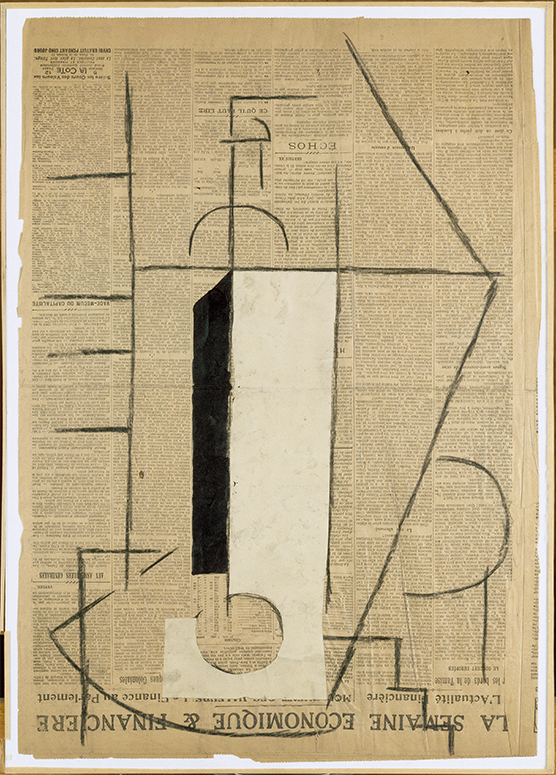A Semiotic Reading
When art historians were confronted with pasted paper, they viewed it as a new form of expression that posed the problem of cubism in general: that of its interpretation. How was one supposed to read a piece for which culture had not yet established any reading convention? The discipline of semiotics seems to be well equipped for approaching a phenomenon of this sort. Much like the other human and social sciences, and particularly art history, it is a discipline that questions meaning. More specifically, it aims to study the construction of meaning, in other words, to study signification: how does meaning make sense? This very broad question can be posed in reference to a specific papier collé by Picasso, dated toward the end of 1912 and held in the Musée Picasso in Paris: Bottle on a Table. What does this work signify and how does it signify? In sum, how is the meaning of this collage generated? The following reading is based on the semiotics of the École de Paris, indebted to Saussurian linguistics, cultural anthropology, and phenomenology. Semiotics, whose leading figure continues to be Algirdas Julien Greimas, has been establishing new theoretical and methodological tools since the 1990s (in other words, to propose a parallel with research on Picasso, since the famous Picasso and Braque. Pioneering Cubism exhibition). Since then, the École de Paris has developed and integrated the passional and cognitive dimensions as well as the concepts of enunciation, perception, and figurativization into the pragmatic dimension of its narrative path (that which concerns action).
The path for reading the work unfolds in three stages. First of all, we will point out that the initial unintelligibility of the piece is an effect of meaning constructed by the piece itself. Next, we will observe how Picasso constructs the figure of a bottle. Lastly, we will place the focus on the making of the gaze, which will appear as an approach that is applied to the collage in its entirety.
We would like to specify that this reading is based on reproductions of the piece; it will have to be put to the test with the pasted paper original.





 Summary
Summary